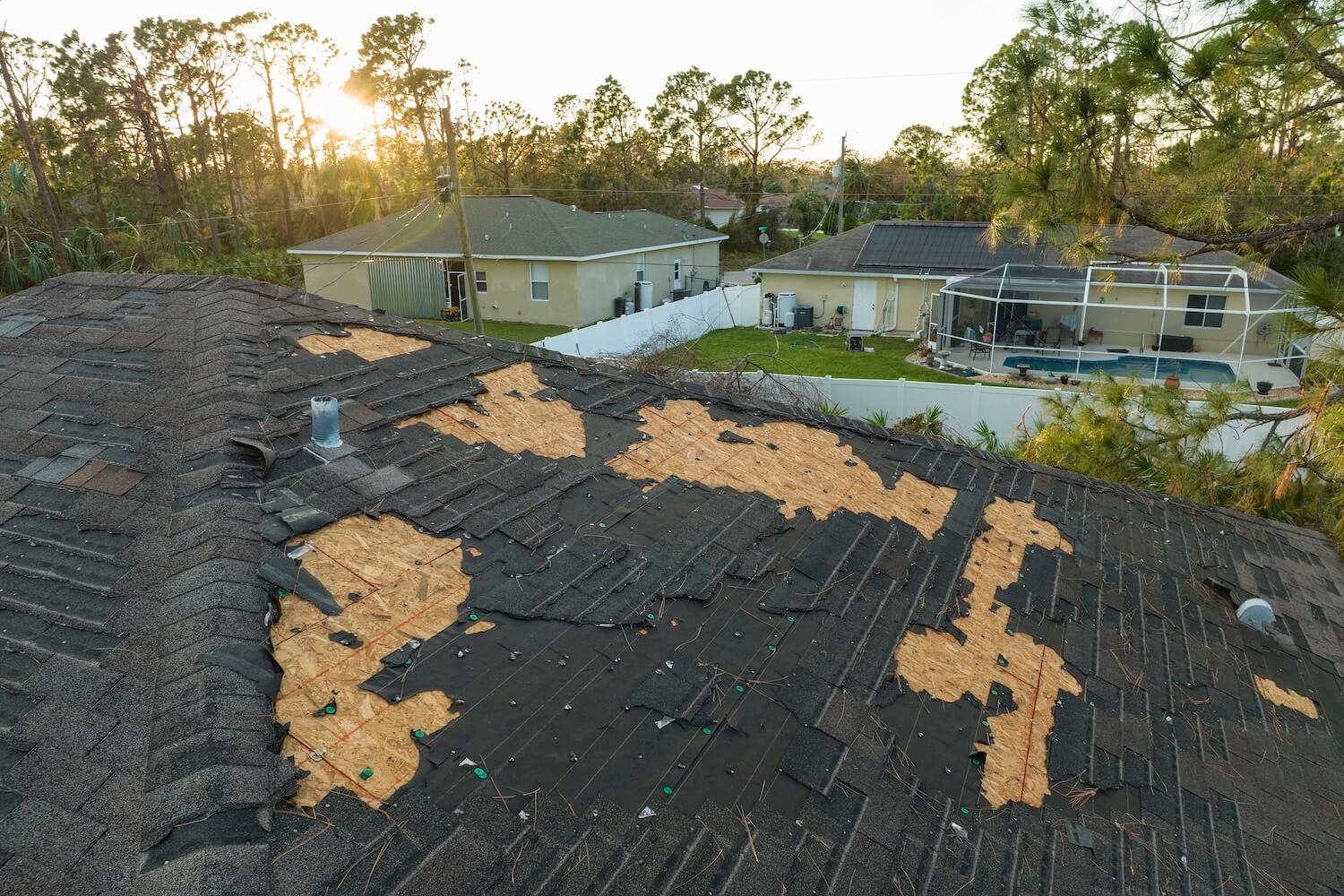When your roof is damaged, whether by a storm, fallen tree, or other natural occurrences, the damage can be both distressing and expensive. Fortunately, homeowner’s insurance is designed to assist with these costs, but navigating an insurance claim for roof replacement is rarely straightforward. The process often involves multiple steps, thorough documentation, and communication with both your insurance company and roofing contractors.
This guide provides an in-depth look at everything you need to know to effectively navigate the insurance claims process for roof replacement, ensuring that you maximize your payout and minimize stress along the way.

Understanding Roof Insurance Coverage: What You Need to Know
The first step in any roofing insurance claim is understanding your insurance policy’s terms. While homeowner’s insurance typically covers roof damage caused by sudden and accidental events, the extent of that coverage can vary widely. Policies may differ based on location, insurer, and even specific endorsements added to the policy. Therefore, before you start the claims process, it’s crucial to familiarize yourself with your policy and understand the kinds of damages that are covered.
Here are some common scenarios where insurance usually provides coverage for roof repairs or replacement:
-
Storm Damage: Roofs are often exposed to wind, hail, and extreme weather conditions. These types of damages are usually covered as long as the damage is sudden and accidental.
-
Falling Debris: If a tree branch or other debris falls on your roof due to weather conditions like wind, this damage may be covered.
-
Fire Damage: If your roof is damaged by fire, such as from a lightning strike or a house fire, your insurance policy will typically cover the repair or replacement.
-
Vandalism: If your roof is damaged due to acts of vandalism, it is typically included under comprehensive coverage in your homeowner’s policy.
-
Damage from Animals: Some homeowner policies cover roof damage caused by wildlife (e.g., raccoons or squirrels) if the damage is sudden and not due to negligence.
However, there are also several exclusions to watch out for:
-
Wear and Tear: Insurance does not cover damage caused by aging, general deterioration, or neglect. Over time, roofs naturally degrade, and insurance typically won’t pay for this kind of damage.
-
Negligence: If the roof was already in poor condition due to lack of proper maintenance, the insurance company may deny your claim.
-
Cosmetic Damage: While your roof might suffer from minor aesthetic issues (e.g., fading or discoloration), most insurance policies only cover repairs or replacement when the roof’s structural integrity is compromised.
-
Flood Damage: Standard homeowner’s insurance doesn’t cover roof damage caused by flooding, unless you have a specific flood insurance policy.
Understanding these details is essential to ensuring that you file a claim for the correct type of damage, so always review your policy with your agent before proceeding.
Step 1: Assess the Damage and Take Action
Once you notice damage to your roof, it’s essential to assess the situation quickly to prevent further problems, such as water leakage or mold growth. The first priority should always be safety. Do not attempt to inspect the roof yourself unless you’re sure it’s safe to do so, especially after major storms or inclement weather.
Initial Inspection
If it’s safe, inspect your roof for visible signs of damage. Look for missing or torn shingles, holes, water stains, or areas of the roof that seem sagging. Check the gutters and downspouts for signs of debris, as this can help confirm damage caused by falling branches, hail, or wind. However, even if you can’t get on the roof yourself, you should make sure to check the interior of your home for water damage in the attic, ceilings, and walls, as these can be early indicators of roof damage.
Document the Damage
Once you’ve identified the damage, it’s crucial to document everything. Take clear photos of the affected areas and any interior damage, such as leaks or water stains. Ensure that your photos are detailed and wide-angle to show the full extent of the damage. If possible, make a video of the damage, as this can sometimes provide even clearer evidence.
In addition to photos and videos, write a detailed description of what happened. For instance, did you notice the damage after a storm? Was there a tree that fell onto the roof? This documentation will help support your claim.
Make Temporary Repairs
If your roof is leaking or there’s a potential for further damage, take immediate action to minimize additional destruction. Use a tarp or plastic sheeting to cover exposed areas temporarily. While you can’t perform permanent repairs before the adjuster arrives, these temporary measures show your insurance company that you’ve done what you could to prevent further damage. Always keep receipts for any materials you buy for these temporary repairs, as these costs may be reimbursed by your insurance.
Step 2: Contact Your Insurance Company
Once the immediate damage has been assessed and documented, it’s time to contact your insurance company. You’ll need to file a claim, and it’s essential to do this promptly. Most policies have a window of time within which you must report the damage, so avoid delaying the process.
Reporting the Claim
When you call your insurer, have the following information on hand:
-
Your policy number
-
The date of the damage
-
A brief description of the damage (e.g., storm-related, fallen tree, etc.)
-
The damage assessment (including details of what’s missing or destroyed)
-
Your contact information for follow-up communication
Most insurance companies provide a 24/7 claims hotline, and many allow you to file claims online. Make sure to request a claim number for tracking purposes.
Review Your Policy’s Deductible and Limits
When you speak to your insurance representative, ask about your deductible. This is the amount you’ll need to pay out of pocket before the insurance kicks in. For example, if your deductible is $1,000 and your roof replacement costs $10,000, you will need to pay the first $1,000, and the insurance company will cover the remaining $9,000.
In addition, ask about the specific coverage limits of your policy. Some policies may have specific caps on how much they will pay for roof replacement, and it’s essential to know if your claim exceeds these limits.
Understand the Claims Process
Each insurance company has its own process for handling claims. Some companies will dispatch an adjuster to your property to inspect the damage, while others might have you submit your damage documentation and photos for review. Ask how long the process will take and what steps you can expect moving forward.
Step 3: The Insurance Adjuster’s Inspection
After filing your claim, an insurance adjuster will be assigned to inspect the damage. The adjuster’s role is to assess the damage and determine how much the insurance company should pay for repairs or replacement. This is a critical step in the process because the adjuster’s report will directly influence the settlement offer.
Preparing for the Adjuster’s Visit
Before the adjuster arrives, make sure that:
-
You’re present during the inspection so you can answer questions and point out specific areas of concern.
-
You have all relevant documentation ready, including photographs, a list of damages, and invoices for any temporary repairs made.
-
You ask the adjuster for an explanation of the next steps and when you should expect a final settlement.
What to Expect During the Inspection
The adjuster will likely inspect the exterior and interior of your home, focusing on both the visible and hidden aspects of roof damage. They’ll take their own photos and notes. In some cases, if the damage is extensive, the adjuster may bring in a structural engineer or roofer to assist in the assessment. Once the inspection is complete, the adjuster will submit their findings to your insurer.
Discrepancies in the Estimate
Sometimes, the adjuster’s estimate may not match what your contractor suggests. This is when you may need to challenge the initial offer. If the amount offered by the insurer doesn’t cover the full cost of repairs or replacement, you can appeal the decision or get additional quotes from contractors to submit for review.
Step 4: Settlement and Negotiation
Once the adjuster’s report is complete, your insurance company will provide you with a settlement offer. The offer will include the amount the insurance company is willing to pay for your roof replacement minus your deductible. This payment will be based on the adjuster’s estimate and possibly depreciation.
Reviewing the Settlement Offer
Take the time to carefully review the settlement offer. Does it cover the cost of roof replacement, including materials, labor, and any other related repairs? If not, you’ll need to negotiate with your insurer. If you disagree with the settlement amount, gather supporting evidence from your contractor and appeal the decision.
Contractor Negotiations
It’s important to choose a reliable, licensed roofing contractor to assist with the repair or replacement of your roof. A trusted contractor can help guide you through the process and ensure that the work meets insurance requirements. Sometimes contractors have experience working with insurance claims, which can help streamline the entire process.
When you choose a contractor, make sure to get multiple estimates to compare the costs and ensure you’re getting a fair deal. Share these estimates with your insurance company if needed to negotiate a higher settlement.
Finalizing the Payment
After agreeing to the settlement amount and completing the necessary paperwork, you’ll receive payment. Be aware that some insurers may pay you the total amount upfront, while others may pay in installments, especially if you’re replacing your roof. Ensure that all expenses are covered before you begin work.
Step 5: Hiring a Professional Roofing Contractor for the Job
Once the insurance claim is approved and funds are secured, it’s time to hire a professional roofing contractor to carry out the work. It’s highly recommended that you choose a reputable, experienced roofing company that is familiar with insurance claims. Many contractors have the expertise to help with the paperwork, offer accurate estimates, and work directly with your insurance company to ensure everything is covered.
Conclusion: The Importance of Professional Roofing Assistance
Navigating the insurance claims process for roof replacement can be complicated, but understanding the steps involved can help you make more informed decisions. From reviewing your insurance policy to hiring a qualified contractor, every step plays a crucial role in ensuring that you receive fair compensation for your roof replacement. By partnering with professionals who are experienced in working with insurance claims, you can have peace of mind knowing that your roof will be repaired or replaced without unnecessary stress or unexpected costs.










